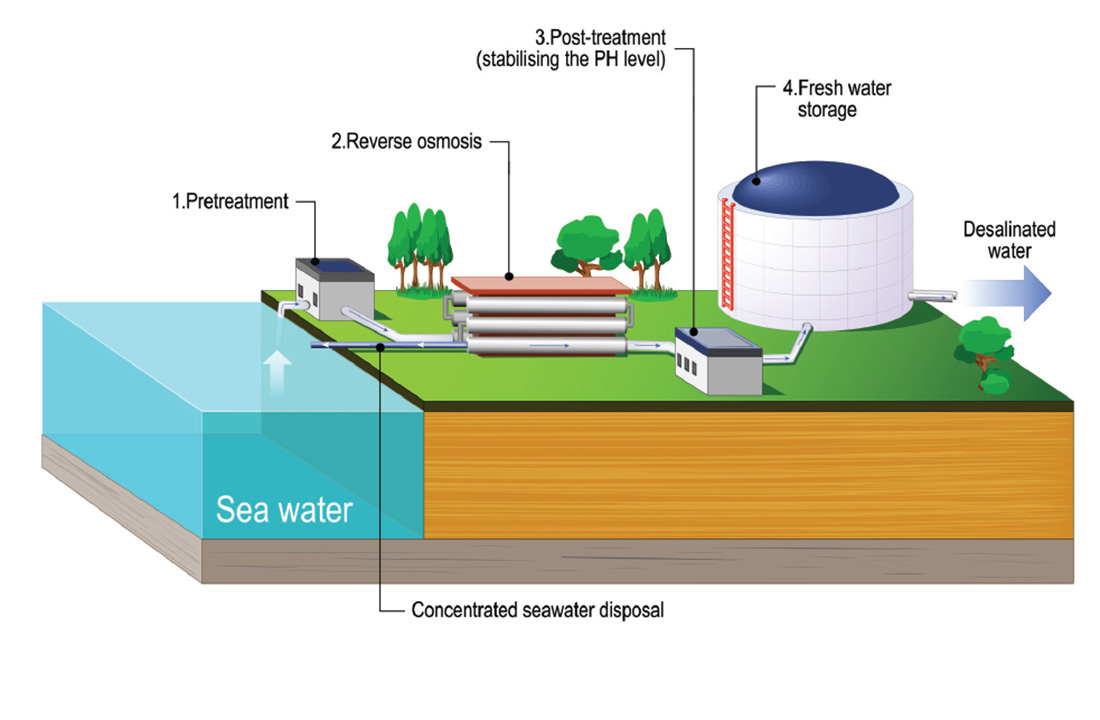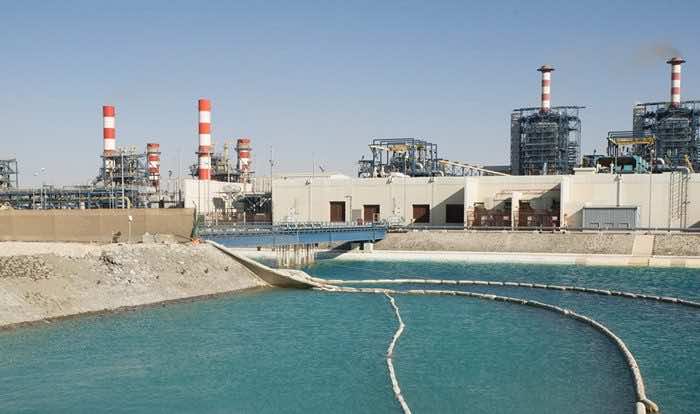Construction of Africa’s largest seawater desalination plant in Casablanca has officially been launched by Morocco’s Crown Prince Moulay El Hassan. Located in the commune of Lamharza Essahel in the province of El Jadida, the plant will have served an estimated 7.5 million local inhabitants. The Casablanca desalination plant will have a capacity of 300 million cubic meters. Additionally, the plant is part of the Improvement of Water Supply axis of the 2020-2027 National Program for Drinking Water Supply and Irrigation. King Mohammed VI launched this program in 2020, with an overall cost that is expected to reach US $14.3 billion.
Africa’s largest desalination plant Phases
The project will be constructed in two phases on a 50-hectare site. The first phase is scheduled to be competed and operational by the end of 2026. The station in the first phase will reach a capacity of 548,000 cubic meters of treated water per day. The timeline for the second phase has not been disclosed however, the capacity with expand to 822,000 cubic meters once completed. Moreover, a unit for desalination will be constructed using reverse osmosis. The station will also include two seawater intake pipelines of 1,850 meters in length and a 2,500-meter-long discharge outfall. In addition to reverse osmosis desalination installations, a sludge treatment unit, and a control and management center.

Also Read: Morocco-Spain High-Speed Rail Route Set to Link Madrid to Casablanca
The Water Transport System
At a cost of US $301 million, a water transport system will be constructed to supply drinking water. It will include including plumbing stations, storage reservoir, and a distribution network of nearly 130 kilometers of supply pipelines. With a drinking water production cost estimated at 4.48 DH/m3, the future plant will be 100% powered by renewable energy and its management will be fully automated. 50 million cubic meters of water will be used for agriculture in the region per year.

The natin has been facing several water problems following a long drought and water crisis in the past 5 years. This brought Morocco to announce measures to rationalize drinking water use, including anti-water wasting campaigns. Casablanca specifically has been marked with a major rainfall deficit and very high pressure on conventional water resources.
Local Water Crisis
The plant aims to meet the growing water demand in the Casablanca region. Additionally, the cities of Settat, Berrechid, Bir Jdid and surrounding areas. In May, Moroccan Minister of Equipment Nizar Baraka said the government has enacted a comprehensive water strategy with three key pushes. He said this strategy covers maximizing traditional water sources, aggressively developing desalination as an unconventional resource, and prioritizing water conservation and efficiency.
Last year, it was announced that Acciona was awarded the construction contract for the plant. The government’s objective is to increase the country’s number of plants from nine to twenty by 2030. It aims to have a total capacity of over 1 billion cubic meters. Current desalination plants include those at Dakhla, Safi, Jorf Lasfar, Amgriou and Guerguerat. According to the Moroccan Ministry of Water, it has been possible to meet the water needs of the Moroccan population despite the country’s water deficit. This is thanks to the state projects developed, mainly in relation to seawater desalination plants and the resource of aquifers. These are geological formations made up of one or more layers of rock, capable of storing and transporting water.
Project for Construction of First Solar Power Plant in Casablanca Launched

